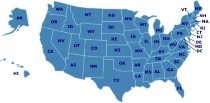Nature Studies
Things to See & Do in Illinois
Chicago Area Homeschool Field Trips
Henson Robinson Zoo
Miller Park Zoo
Field Museum of Natural History
Brookfield Zoo
Glen Oak Zoo
Scovill Zoo
Cosley Zoo
Lincoln Park Zoo
John G. Shedd Aquarium
Resources
Field Trips: Bug Hunting, Animal Tracking, Bird-watching, Shore Walking
With Jim Arnosky as your guide, an ordinary hike becomes an eye-opening experience. He'll help you spot a hawk soaring far overhead and note the details of a dragonfly up close. Study the black-and-white drawings -- based on his own field research -- and you'll discover if those tracks in the brush were made by a deer or a fox.
In his celebrated style, this author, artist, and naturalist enthusiastically shares a wealth of tips. Jim Arnosky wants you to enjoy watching wildlife. He carefully explains how field marks, shapes, and location give clues for identifying certain plants and animals wherever you are. He gives hints for sharpening observational skills. And he encourages you to draw and record birds, insects, shells, animal tracks, and other finds from a busy day's watch.
Nature Studies Homeschool Curriculum
Considering God's Creation
Nature Studies Activities & Experiments
Handbook of Nature Study
How I Teach a Large Family in a Relaxed, Classical Way: Science
Arbor Day National Poster Contest
Featured Resources
As an Amazon Associate, we earn from qualifying purchases. We get commissions for purchases made through links on this site.





